Post Endometrial Ablation Syndrome
Post endometrial ablation syndrome. After an endometrial ablation women have varying severity and duration of cramps and vaginal discharge. Once healing of the uterine lining is complete most women experience lighter periods or even no periods. History and sonogram.
These are surgeries like NovaSure or ThermaChoice or HTA which are all excellent procedures. Post tubal endometrial ablation syndrome is when there are loculated areas inside the uterus still menstruating but nowhere for the blood to go. Recurrent tubal distention resulting from retrograde menstruation into occluded proximal fallopian tube segments by re.
The most likely cause for this to occur is thought to be the presence of entrapped tissue or scarring that has occurred during the ablation procedure. Post-ablation syndrome is one of the names in the medical literature used to describe symptoms like Nuzzos. Post endometrial ablation syndrome is a problem that women have after they have had a specific uterine treatment called endometrial ablation.
Post-ablation tubal sterilization syndrome and delays in finding and diagnosing endometrial cancer. Post-ablation syndrome describes the symptoms of pain or a return to heavy bleeding that often leads to hysterectomy as MedPage Today reported in an earlier story in this series. What is post-endometrial ablation syndrome.
Ask your gynecologist if she preforms these. Another is late-onset endometrial ablation. It has been reported in 6-8 of these patients and occurs when bleeding from residual endometrium is obstructed due to surrounding uterine scarring and tubal occlusion 1.
Any endometrial ablation discharge should stop after at the latest a few months. The discharge is typically watery and clear and can last for several weeks. 6228 views Reviewed 2 years ago.
Postablation tubal sterilization syndrome PATSS is an uncommon complication of endometrial ablation in patients with antecedent tubal ligation characterized by cyclic pelvic pain. Nonresectoscopic endometrial ablation techniques are being used as an alternative first-line management for menorrhagia.
With these techniques patients are at risk of developing delayed complications including painful obstructed menses such as central hematometra and cornual hematometra and postablation tubal sterilization syndrome.
Recurrent tubal distention resulting from retrograde menstruation into occluded proximal fallopian tube segments by re. Any bleeding from persistent or regenerating endometrium behind the scar may be obstructed and cause problems such as central hematometra cornual hematometra postablation tubal sterilization syndrome retrograde menstruation and potential delay in the diagnosis of endometrial cancer. The most likely cause for this to occur is thought to be the presence of entrapped tissue or scarring that has occurred during the ablation procedure. Post tubal endometrial ablation syndrome is when there are loculated areas inside the uterus still menstruating but nowhere for the blood to go. It has been reported in 6-8 of these patients and occurs when bleeding from residual endometrium is obstructed due to surrounding uterine scarring and tubal occlusion 1. It causes monthly pain and on tv sonogrom should show blood trapped withing the uterusIf your tubes arent tied it could stil happen but is less lilkely. Ask your gynecologist if she preforms these. The post endometrial ablation syndrome is when the patients have to bear high degree of pelvic pain with or without a change in their bleeding pattern. Post endometrial ablation syndrome is a problem that women have after they have had a specific uterine treatment called endometrial ablation.
Endometrial Ablation Techniques Endometrial ablation is the surgical de-struction of the uterine lining to the basalis level 46 mm deep depending on menstru-al cycle to limit the potential for endome-I n the past decade nonresectoscop-ic endometrial ablation tech-niques have continued to increase in popularity as an alternative. It has been reported in 6-8 of these patients and occurs when bleeding from residual endometrium is obstructed due to surrounding uterine scarring and tubal occlusion 1. Endometrial Ablation Techniques Endometrial ablation is the surgical de-struction of the uterine lining to the basalis level 46 mm deep depending on menstru-al cycle to limit the potential for endome-I n the past decade nonresectoscop-ic endometrial ablation tech-niques have continued to increase in popularity as an alternative. Post tubal endometrial ablation syndrome is when there are loculated areas inside the uterus still menstruating but nowhere for the blood to go. With these techniques patients are at risk of developing delayed complications including painful obstructed menses such as central hematometra and cornual hematometra and postablation tubal sterilization syndrome. What is post-endometrial ablation syndrome. After an endometrial ablation women have varying severity and duration of cramps and vaginal discharge.
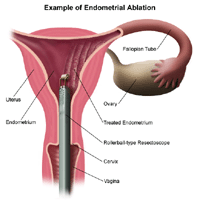










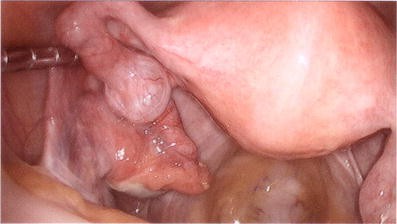



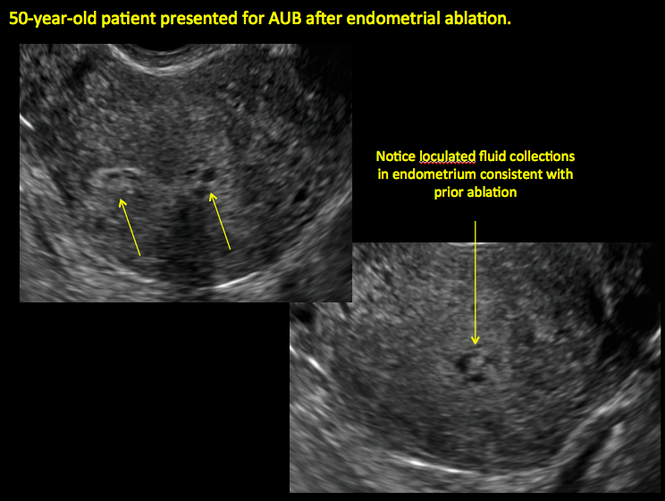


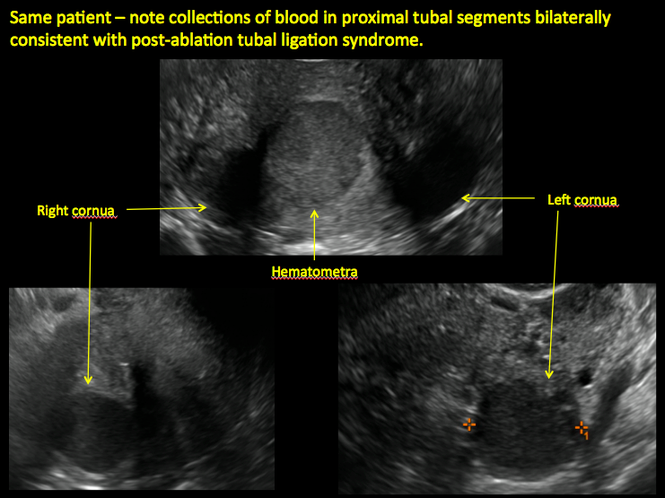

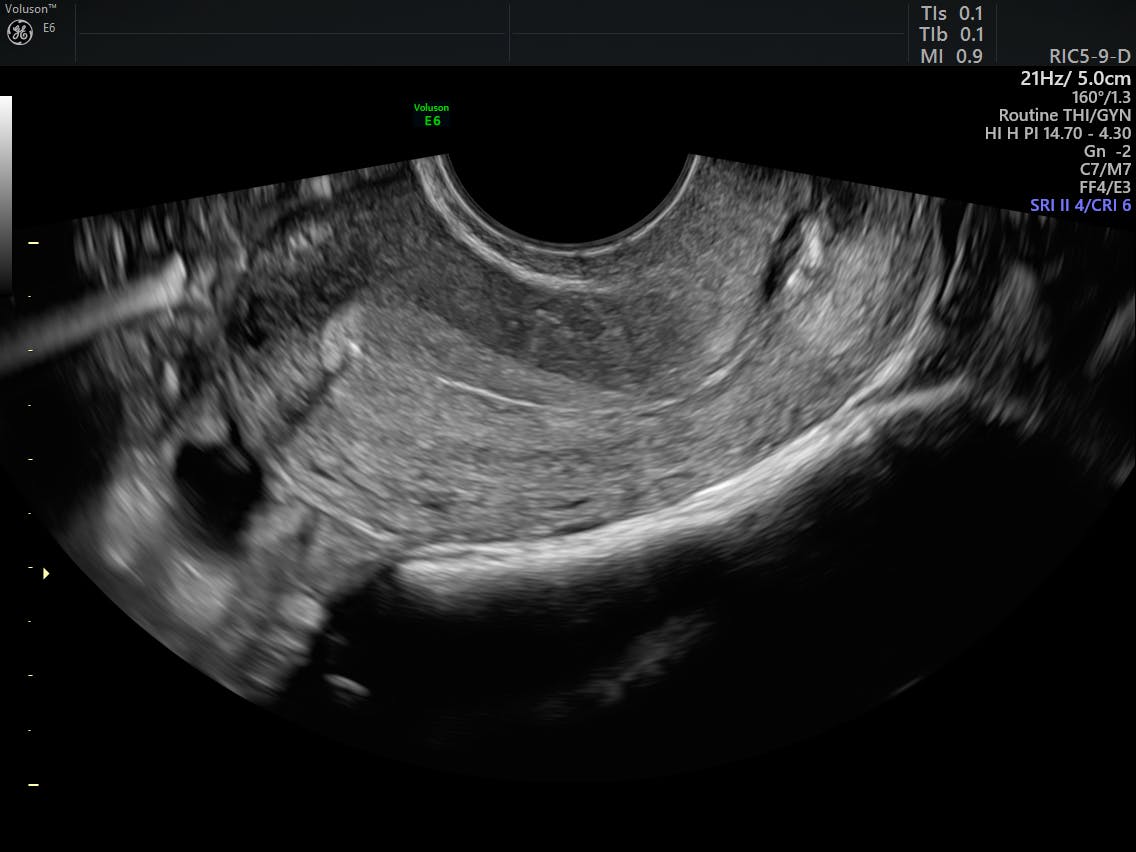





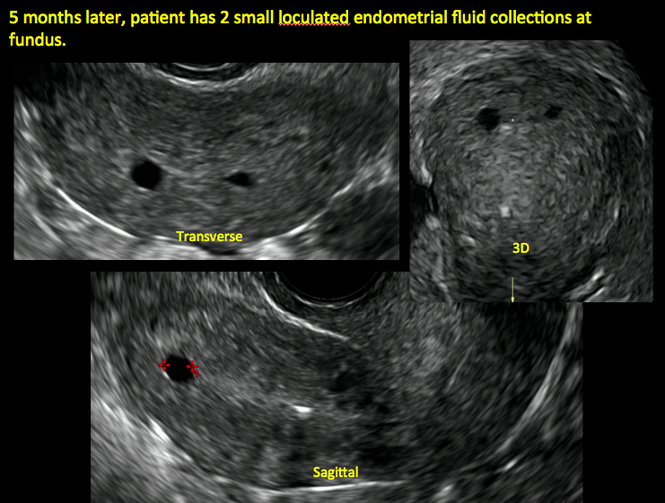



















Post a Comment for "Post Endometrial Ablation Syndrome"